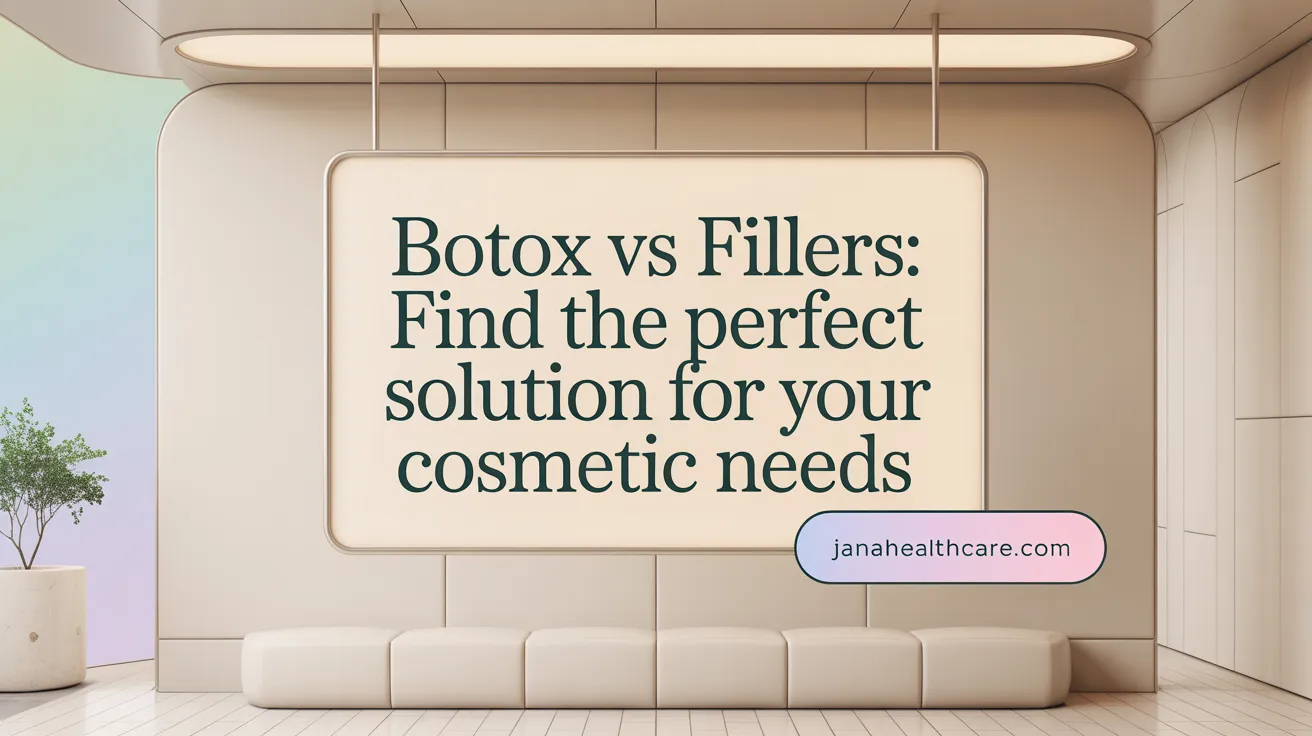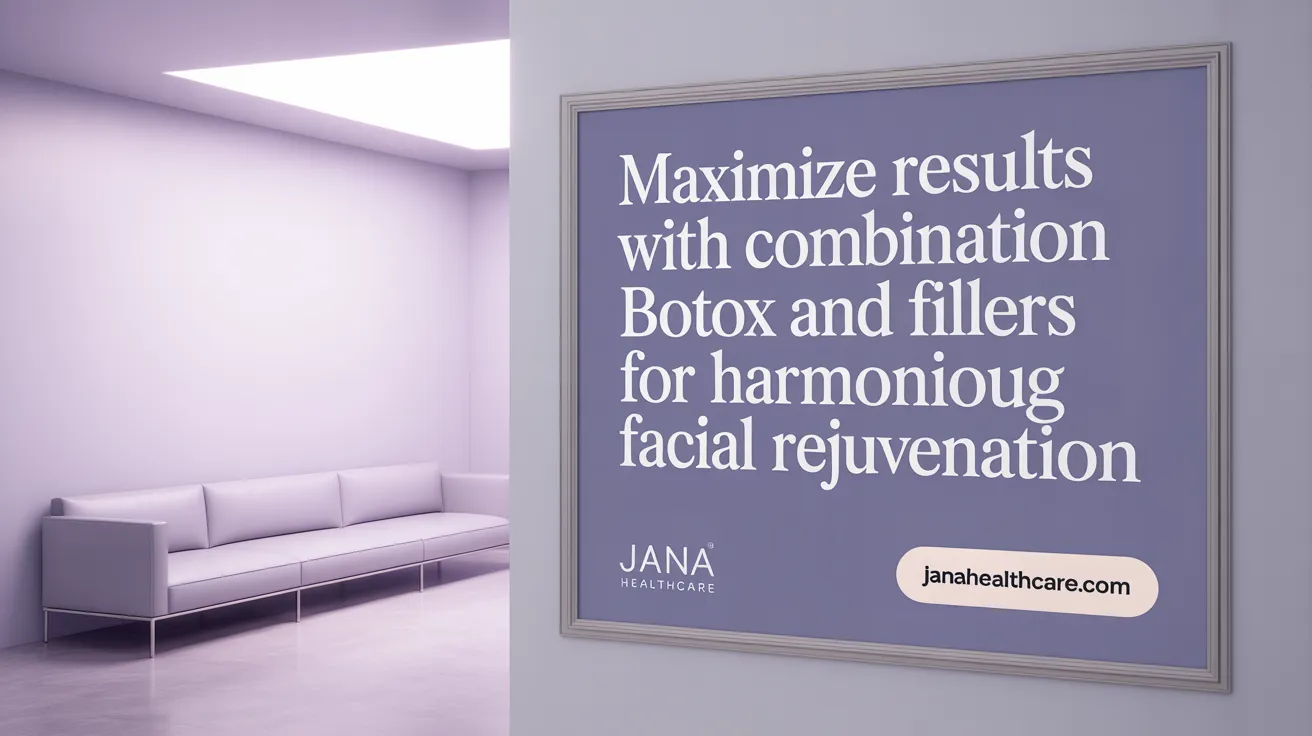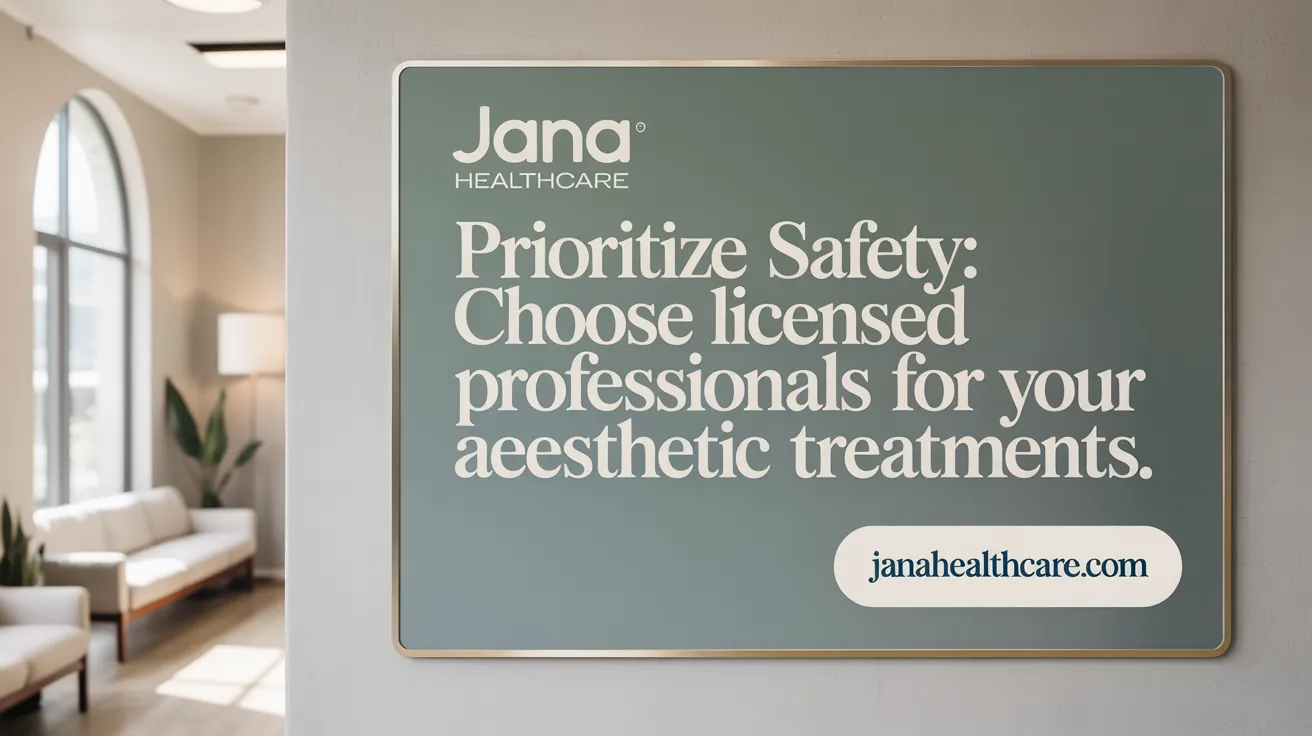Introduction to Minimally Invasive Cosmetic Treatments
Popularity of Botox and Fillers
In recent years, Botox and dermal fillers have become among the most popular minimally invasive cosmetic procedures worldwide. In 2022 alone, their high demand illustrated a strong preference for treatments that offer facial rejuvenation without surgery. These procedures are favored for their ability to provide natural, subtle enhancements with minimal downtime.
Basic Differences and Complementary Nature of Treatments
Botox and fillers serve different, yet complementary purposes. Botox is a neuromodulator that relaxes muscles to smooth dynamic wrinkles caused by facial expressions, such as crow’s feet and frown lines. Its effects typically appear within a week and last for about 3 to 4 months.
In contrast, dermal fillers are gel-like substances, mainly composed of hyaluronic acid, injected to restore lost volume, smooth static wrinkles, and enhance facial contours. Results from fillers are immediate and can last from 6 months up to 2 years, depending on the type.
Many patients benefit from a tailored combination of both treatments, addressing muscle activity and volume loss for comprehensive facial rejuvenation.
Role of Cosmetic Dermatology in Aesthetic Care
Cosmetic dermatology practices, especially in places like Brooklyn, emphasize personalized treatment plans. Skilled professionals utilize the latest FDA-approved neuromodulators and fillers to safely deliver natural-looking results. These treatments fit seamlessly into a holistic wellness approach, optimizing both appearance and overall confidence.
Understanding Botox: Mechanism, Uses, and Benefits
What is Botox and how does it work
Botox is a neuromodulator derived from a purified form of botulinum toxin type A, produced by the bacterium Clostridium botulinum. It works by blocking nerve signals to targeted facial muscles, which causes temporary muscle relaxation. This relaxation smooths out dynamic wrinkles — those formed by facial expressions like frowning or squinting — typically within 3 to 7 days after treatment. Learn more about How Botox works and Botox injection technique.
FDA approval and treatment areas
Botox is FDA-approved for cosmetic use as well as several medical conditions. On the aesthetic side, typical treatment areas include forehead lines, crow’s feet around the eyes, frown lines between the eyebrows, bunny lines on the nose, lip flip adjustments, and jawline slimming by targeting the masseter muscle. For more details, see Botox FDA-approved treatment and Botox treatment areas.
Expected duration and effects
After injection, Botox effects typically last 3 to 4 months, with some cases extending up to 6 months depending on individual factors. The treatment is quick, often completed within 15 minutes, and results emerge gradually — partially visible in around 3 days and fully apparent within two weeks. Repeat treatments are recommended to maintain the smoothing effect. For more information, read Botox treatment duration and Duration of Botox effects.
Medical as well as cosmetic applications
Beyond cosmetic rejuvenation, Botox treats medical conditions such as chronic migraines, overactive bladder, muscle stiffness, eyelid twitching, and temporomandibular joint (TMJ) disorders. It can also alleviate pain by relaxing muscles and blocking pain signals in areas such as the neck, jaw, and back. Explore medical uses further at Medical uses of Botox and Botox for migraine treatment.
Jana HealthCare's integrated approach
Jana HealthCare offers Botox as part of a broad spectrum of medical and aesthetic services. They provide integrated clinical care along with cosmetic dermatology procedures, including fillers, chemical peels, and laser treatments. Their personalized approach supports both health optimization and aesthetic enhancement, ensuring patients receive comprehensive care tailored to their individual needs. Visit Heights Dermatology and Laser for more on combined cosmetic dermatology treatments including Botox and Fillers Services.
Dermal Fillers Explained: Types, Applications, and Outcomes

What are Dermal Fillers and What Substances Are Used?
Dermal fillers are gel-like substances injected under the skin to restore volume and smooth wrinkles. Most are made from hyaluronic acid fillers, a natural substance that adds moisture and fullness. Other types include calcium hydroxylapatite, poly-L-lactic acid, and polymethylmethacrylate beads suspended in collagen. These fillers are FDA-approved dermal fillers for cosmetic enhancement and are temporary as the body gradually absorbs them.
Which Areas Can Dermal Fillers Treat and How Do They Restore Volume?
Dermal fillers target areas with volume loss or static wrinkles, such as the cheeks, nasolabial folds, marionette lines, lips, under-eye hollows, jawline, chin, and even the hands. By adding structure beneath the skin, fillers plump sagging tissues and redefine facial contours, helping to rejuvenate and balance the face's appearance. These fillers uses in contouring are widely used for facial sculpting.
How Long Do Dermal Fillers Last and When Are Results Visible?
Results appear immediately after treatment, providing instant improvement. Depending on the filler type, effects can last from six months up to two years. For example, hyaluronic acid fillers typically last six to twelve months, while poly-L-lactic acid stimulates collagen and may last longer. Recovery requires minimal downtime, with any swelling or bruising usually resolving within days.
What Are the Risks and Safety Considerations?
While generally safe when administered by experienced professionals, dermal fillers carry risks such as bruising, redness, swelling, pain, itching, or tenderness. Rare but serious complications include infection, nodules, allergic reactions, or vascular occlusion leading to tissue damage. To minimize risks, treatments should be performed by licensed healthcare providers for filler injection using FDA-approved products and sterile techniques.
| Topic | Details | Notes |
|---|---|---|
| Main Substances | Hyaluronic acid, calcium hydroxylapatite, PLLA, PMMA | Mostly temporary, with varying durations |
| Treatment Areas | Cheeks, lips, jawline, under-eyes, hands | Targets volume loss and static wrinkles |
| Results and Duration | Immediate results, lasts 6 months to 2 years | Minimal downtime, quick recovery |
| Risks and Safety | Bruising, redness, rare serious complications | Requires licensed professional and FDA products |
Key Differences Between Botox and Fillers: Choosing the Right Treatment

How Does Botox Work and What Does it Treat?
Botox is a neuromodulator derived from botulinum toxin type A that works by blocking nerve signals to targeted facial muscles. This results in muscle relaxation with Botox, reducing the appearance of dynamic wrinkles—those caused by facial expressions like frowning or squinting. Common Botox treatment areas include forehead lines, crow's feet, and frown lines. Effects generally begin within 3 to 7 days and last around 3 to 4 months (Duration of Botox effects).
What Are Dermal Fillers and Their Role?
Dermal fillers are gel-like substances, mainly composed of hyaluronic acid fillers, injected under the skin to restore lost volume with fillers and smooth static wrinkles that appear without muscle movement. They improve facial contours in areas such as cheeks, lips, under-eye hollows, and jawline. Unlike Botox, fillers provide immediate results lasting from 6 months up to 2 years depending on the type, such as hyaluronic acid or poly-L-lactic acid (Types of dermal fillers).
How Do Treatment Times and Longevity Compare?
Botox treatments are quick, often completed in about 15 minutes (Botox injection technique, with effects appearing over several days (Botox results timeline). Fillers also have short procedure times and deliver immediate results. However, Botox results typically last 3 to 4 months, necessitating repeat treatments, while fillers can last much longer—sometimes up to two years depending on the formulation.
When Should You Choose Botox, Fillers, or Both?
Botox is ideal for targeting wrinkles caused by muscle movement, whereas fillers are suited for volume loss and contouring. Many patients benefit from a combination facial rejuvenation treatments for comprehensive facial rejuvenation options that address dynamic wrinkles and volume deficiencies simultaneously. Consultation with a qualified provider, such as a facial rejuvenation specialist, ensures personalized treatment plans tailored to individual needs.
Combination Treatments: Integrating Botox and Fillers for Comprehensive Rejuvenation

What Are the Benefits of Combining Botox and Fillers?
Combining Botox and dermal fillers offers a comprehensive approach to facial rejuvenation by addressing different types of aging signs simultaneously. Botox relaxes muscles to smooth dynamic wrinkles caused by facial movements, such as crow’s feet and frown lines. Dermal fillers restore lost volume and shape, smoothing static wrinkles and enhancing facial contours like cheeks and lips. Together, these treatments provide a balanced, natural-looking youthful appearance by targeting both muscle activity and volume loss. This is a prime example of combination facial rejuvenation treatments.
How Do Experts Recommend Personalizing Treatment Plans?
Experienced clinicians, like Dr. Steven Clark of Bluewater Plastic Surgery in Brooklyn, emphasize tailored treatment plans that consider each patient's unique facial anatomy and aging patterns. Typically, practitioners evaluate the areas where muscle relaxation or volume restoration will deliver the most benefit. Many patients receive Botox injections in areas with dynamic wrinkles and dermal fillers in regions needing structural support or enhancement. Personalized plans often include sequencing treatments to maximize results and maintain natural facial movement, embodying best practices in combination facial rejuvenation treatments.
Which Areas Benefit Most from Dual Modalities?
- Forehead and Frown Lines: Botox relaxes muscles causing expression lines.
- Crow’s Feet and Bunny Lines: Botox reduces muscle contractions.
- Cheeks, Nasolabial Folds, Marionette Lines: Fillers add volume and smooth wrinkles.
- Lips and Under-Eye Hollows: Fillers restore fullness to improve contour.
- Jawline and Chin: Both treatments can be used—Botox for muscle slimming and fillers for contour enhancement.
Is It Safe and Effective to Combine Botox and Fillers?
When administered by licensed, experienced practitioners using FDA-approved products, combining Botox and fillers is safe and effective. Side effects are generally mild and temporary, such as bruising or swelling. The treatments complement each other without interfering, delivering results that last from several months up to two years, depending on the filler type. Patients benefit from comprehensive facial rejuvenation with minimal downtime and modern, evidence-based care. This approach aligns with current trends in combination facial rejuvenation treatments and facial rejuvenation options.
Safety and Best Practices in Injectable Aesthetic Procedures

Importance of Licensed Healthcare Professionals
For Botox injections and dermal filler injections, safety begins with choosing a licensed and experienced healthcare provider, such as a board-certified dermatologist or plastic surgeon. These professionals understand facial anatomy, minimizing risks and ensuring precise, effective treatments. Clinics like those in Brooklyn emphasize personalized care with specialists trained in cosmetic dermatology treatments to optimize both safety and aesthetic outcomes.
Potential Side Effects and Managing Risks
While generally safe, Botox treatment and dermal fillers can cause side effects like bruising, redness, swelling, and tenderness. More serious complications, though rare, include tissue damage, allergic reactions, or vision problems. Providers conduct thorough assessments to reduce risks and manage any adverse effects promptly. Patients are advised to follow pre- and post-treatment guidelines strictly to enhance safety.
Avoiding Unapproved Products and Procedures
Using only FDA-approved products administered by qualified practitioners is critical. Unapproved or counterfeit fillers sold outside clinical settings may cause severe harm, including permanent tissue damage. Patients should avoid nonmedical providers or unregulated clinics offering cheap or off-label treatments. Verified medical-grade injections are essential for protecting health and achieving natural-looking results.
Post-Treatment Care Guidelines
After injections, patients should avoid alcohol and blood-thinning medications for 24 hours to minimize bruising. They should refrain from rubbing or massaging the treatment area immediately following the procedure. Light activities can typically resume quickly, but vigorous exercise should be delayed for a short period. Following these care instructions supports recovery and maintains the longevity of the results, which vary by treatment type as detailed in Botox treatment duration and Fillers treatment duration.
Adhering to these best practices ensures that Botox and dermal fillers provide safe, effective facial rejuvenation while minimizing complications.
Incorporating Cosmetic Dermatology within Multidisciplinary Care at Jana HealthCare
How is cosmetic dermatology incorporated into the services provided by Jana HealthCare?
Cosmetic dermatology at Jana HealthCare is a vital part of its comprehensive patient care approach. The clinic offers a variety of minimally invasive cosmetic procedures aimed at enhancing skin appearance and addressing signs of aging. Popular options include Botox, which relaxes facial muscles to smooth wrinkles, and dermal fillers such as JUVÉDERM, Restylane, and BeLOTERO BALANCE that restore volume and soften lines for a refreshed look. Treatments like Sculptra encourage the body's collagen production for gradual, natural rejuvenation, while Radiesse provides structural support and can also be used for hand rejuvenation. Many patients benefit from combination facial rejuvenation treatments for optimal results.
What cosmetic procedures are available at Jana HealthCare?
Jana HealthCare’s cosmetic dermatology services include injections of neuromodulators (Botox) and various FDA-approved dermal fillers. Additionally, the practice offers laser and device-based treatments like Ultherapy, which uses ultrasound for non-surgical skin tightening, as well as procedures for hair removal and general skin rejuvenation. These options provide patients with diverse choices that suit their unique aesthetic goals. Many patients opt for combination facial rejuvenation treatments to enhance results.
How does cosmetic dermatology integrate with clinical and wellness services?
The integration of cosmetic dermatology with Jana HealthCare’s clinical and wellness services supports a holistic approach to patient health. Cosmetic treatments complement clinical care by improving skin vitality and appearance, which enhances overall well-being and confidence. By offering these services alongside medical care, Jana HealthCare ensures that patients receive personalized care reflecting both health optimization and aesthetic enhancement. This integrative approach aligns with the concept of combination facial rejuvenation treatments to maximize benefits.
How is expert care ensured to provide personalized treatment?
Jana HealthCare employs experienced, licensed healthcare professionals specialized in dermatology and aesthetic medicine. This expert team ensures that cosmetic treatments are tailored to individual patient needs, prioritizing safety and effectiveness. By combining precise assessment with advanced techniques and medical-grade products, the practice delivers natural-looking results, reinforcing patient trust and satisfaction. For more information on finding licensed dermatologists, see Heights Dermatology and Laser.
Wellness Therapies Supporting Aesthetic Treatments at Jana HealthCare

How wellness therapies complement cosmetic procedures
Wellness therapies at Jana HealthCare are designed to enhance and support the results of cosmetic treatments. These therapies not only improve overall health but also prepare the body to respond better and recover faster from aesthetic procedures. By focusing on holistic care, Jana HealthCare ensures patients receive an integrative treatment plan that pairs external enhancement with internal wellbeing.
Nutrition counseling and stress management offerings
Patients can expect tailored nutrition counseling that focuses on optimizing dietary habits to improve skin health, support tissue repair, and boost immune function. Alongside this, stress management techniques such as mindfulness meditation, relaxation exercises, and breathing practices are provided to reduce mental and emotional stress, which can otherwise affect skin conditions and the healing process.
Holistic approaches to enhance treatment outcomes
Jana HealthCare emphasizes a holistic approach by incorporating lifestyle adjustments and complementary therapies like acupuncture, which may improve circulation and reduce inflammation. These strategies work synergistically with cosmetic procedures like Botox and fillers, combination facial rejuvenation treatments, and combination facial rejuvenation treatments to promote a more natural, long-lasting rejuvenation.
Emphasis on personalized and integrative care
Every wellness plan at Jana HealthCare is personalized, ensuring that the therapies align with each patient's unique health profile and aesthetic goals. This integrative care model fosters a balanced approach that nurtures both the external appearance and internal vitality, maximizing overall treatment satisfaction and health optimization.
Making an Informed Choice: Consulting Experts for Personalized Cosmetic Solutions
Importance of Professional Consultation
Embarking on a journey toward facial rejuvenation begins with a thorough consultation. Licensed healthcare providers, especially those with expertise in dermatology and plastic surgery, are essential for ensuring safe and effective treatment outcomes. Clinics in Brooklyn, such as Bluewater Plastic Surgery and Heights Dermatology and Laser, emphasize personalized care that aligns with individual skin types, facial anatomy, and aesthetic goals.
Tailoring Treatments to Individual Needs
No single approach fits everyone. Treatments like Botox and dermal fillers serve different purposes: Botox targets dynamic wrinkles by relaxing muscles, while fillers add volume to improve static wrinkles and facial contours. Experts evaluate factors such as facial expressions, areas of concern, and lifestyle to recommend the most suitable combination. Such customization ensures natural-looking results and maximizes the longevity of effects.
Safe and Effective Aesthetic Enhancement
Safety is paramount in cosmetic procedures. Professionals utilize FDA-approved products and modern techniques to minimize risks such as bruising, swelling, or more severe complications. Comprehensive evaluations include reviewing medical history and contraindications, avoiding unapproved substances, and adhering to proper pre- and post-procedure care guidelines.
Combining Clinical, Cosmetic, and Wellness Services for Overall Health
Top clinics integrate dermatological, cosmetic, and wellness therapies to optimize overall health and beauty. This holistic approach may include skin cancer screenings, chemical peels, and laser treatments alongside neuromodulator and filler injections. The synergy of these services supports sustained skin vitality and enhances facial aesthetics, fostering confidence and well-being.
